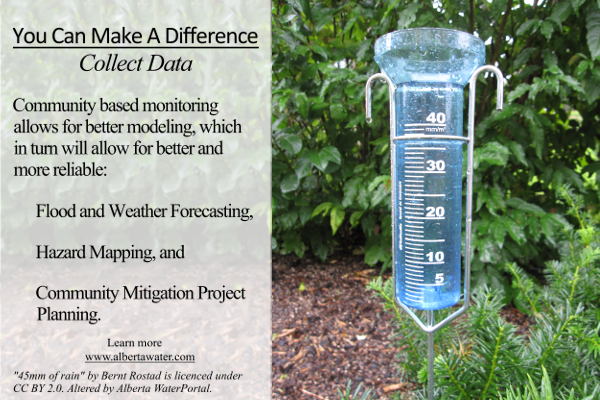Make A Difference – Actions For Individuals To Mitigate Flood and Drought | Collect Data
While much attention had been paid to large community scale mitigation projects and methods, there are opportunities for individuals to play a role in mitigating flooding. To tap into these opportunities the WaterPortal will be sharing a series of blogs entitled “Make A Difference – Actions For Individuals To Mitigate Flood and Drought” which focuses on small, individual efforts that can positively contribute to flood (and drought) mitigation. Spoilers: it all has to do with what we know about, and the health, of our watersheds.
To be very clear, a single person will not be able hold back the entirety of future flood waters on their own. However, enough people engaging in small acts can make a difference, especially in smaller scale events.
Damage from flooding is generally caused by a combination of:
- speed of water
- quantity of water,
- or an insufficient information or data.
The following series of blog posts will present a number of ways individuals can help mitigate future floods along the three ways flood damage occurs.
Measuring Rain, Hail, and Snow
“The Rain Doesn’t Fall The Same On All” – Unknown

One way to contribute to flood management is to simply monitor, record, and submit weather information to CoCoRahs. CoCoRahs stands for Community Collaborative Rain, Hail and Snow Network, and it something we have blogged about in the past. When it rains, snows, or hails volunteers take measurements of precipitation and submit it to the CoCoRahs website.
This community based monitoring means more data points can feed into hydrological models which are the basis for flood hazard mapping, river forecasting and community mitigation project planning. The Manitoba Government is already on board with CoCoRahs and using the data our friends downstream are collecting, and recently a CoCoRahs office has opened in Saskatchewan. Now it’s Alberta’s turn to add to the information out there so it can be used for more informed planning and forecasting in Western Canada.
You can sign up on the CoCoRahs website by clicking here. Outside of signing up you’ll also need a 4 inch diameter rain gauge. You can buy one from the CoCoRahs Canada Store, or you can build one yourself.
What else can we do?
Do you have other ideas on how individuals can help make this a healthier watershed, or provide information to experts so that their studies may be more informed? Let us know in the comments or by email.
Read more from the Actions For Individuals To Mitigate Flood and Drought series:
Part 1: Collect Data
Part 2: Slowing and Absorbing Rainwater
Part 3: Watershed Planning
Part 4: Storage
